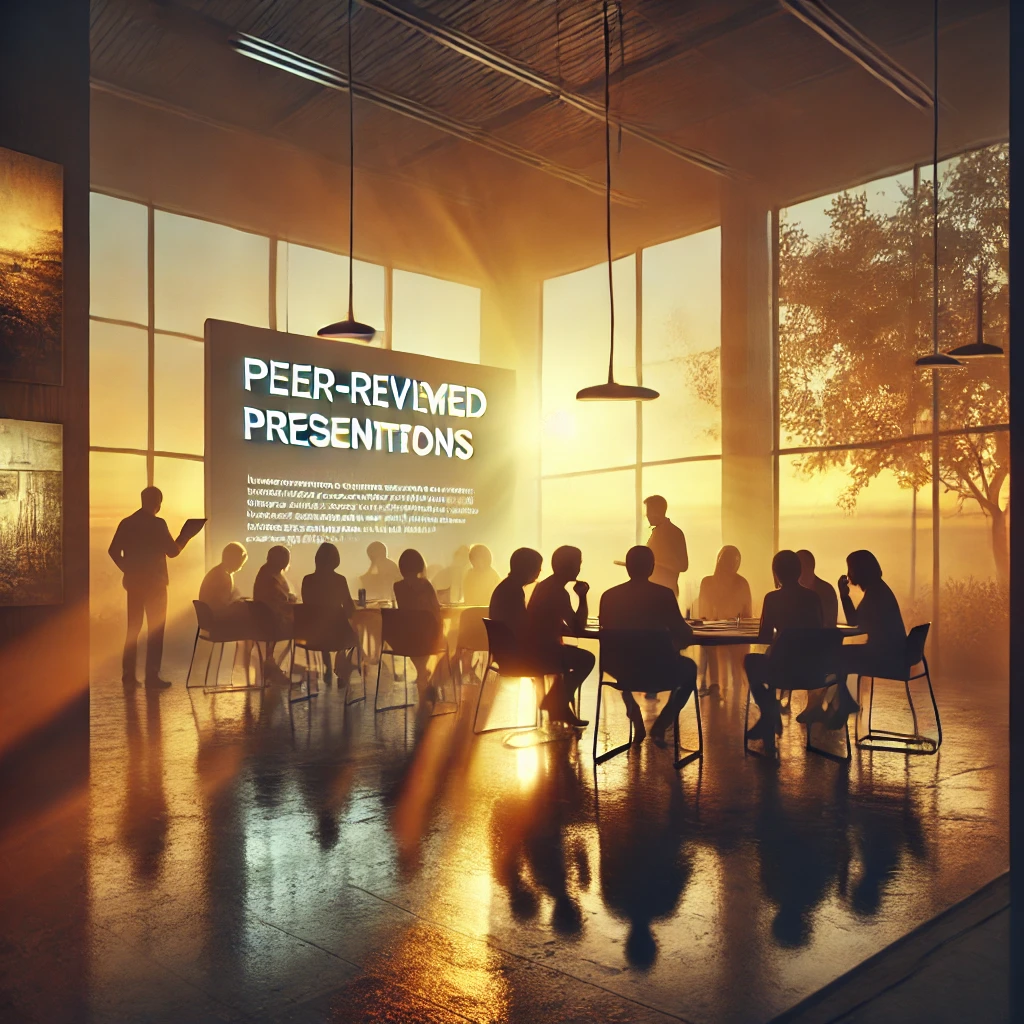Presentations
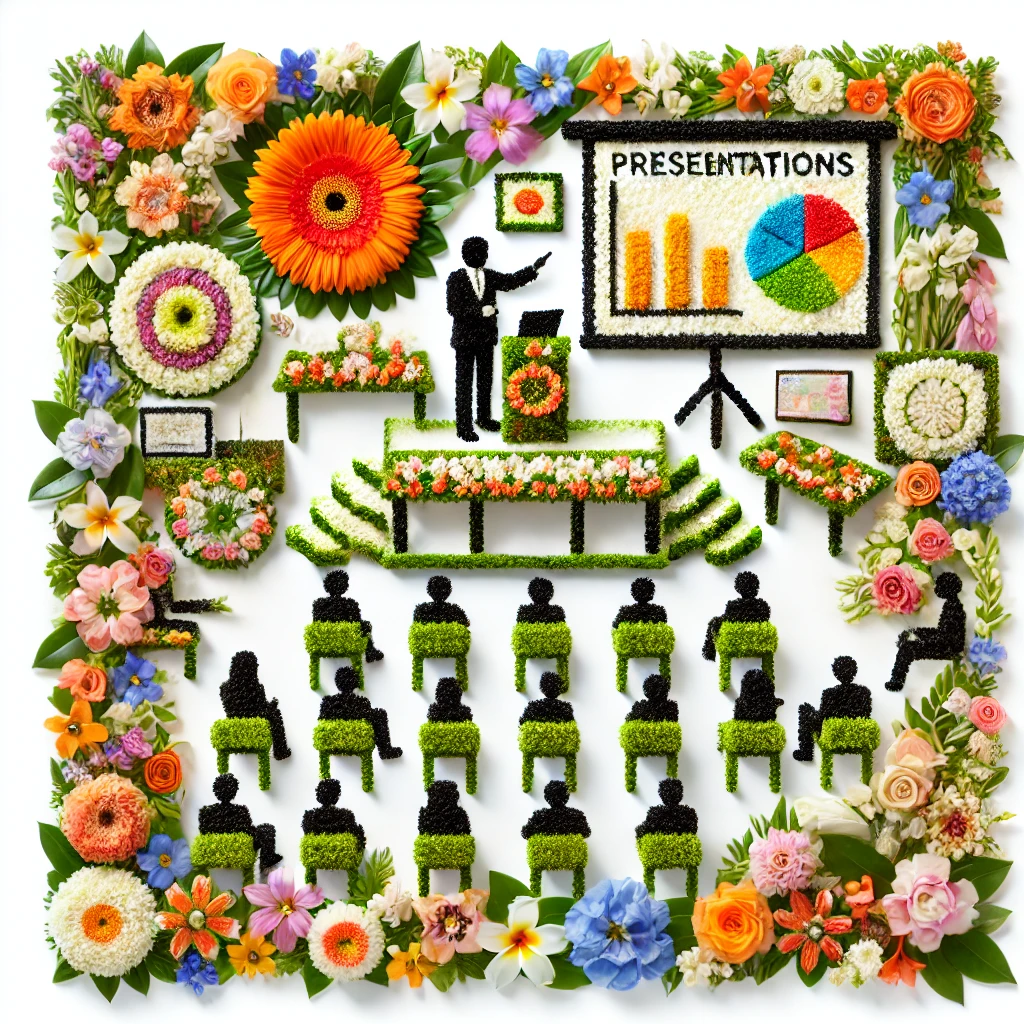
Learning Goals
Organize a Presentation: Learn how to structure your ideas clearly and logically to create an engaging presentation.
Deliver a Presentation: Develop techniques to deliver your presentation confidently, including voice modulation, body language, and audience engagement.
Use Visual Aids Effectively: Understand the role of visual aids in presentations and learn how to create and integrate them to support your message.
Content
Organizing a Presentation

Introduction
Purpose: Capture the audience’s attention and introduce the topic.
Structure: Start with a hook (a question, quote, or interesting fact), state your purpose, and provide an overview of the main points.
Example: “Did you know that 90% of communication is non-verbal? Today, I’m going to talk about how body language can make or break a presentation.”
Body
Purpose: Present your main points in a logical sequence, supported by evidence and examples.
Structure: Organize your points into clear sections, each with a main idea and supporting details. Use transitions to move smoothly from one point to the next.
Example: If your presentation is on climate change, you might divide the body into sections like “Causes,” “Effects,” and “Solutions.”
Conclusion
Purpose: Summarize the main points and leave a lasting impression.
Structure: Restate your key ideas, offer a final thought or call to action, and thank your audience.
Example: “In conclusion, by making small changes in our daily lives, we can all contribute to a healthier planet. Thank you for your attention.”
Delivering a Presentation
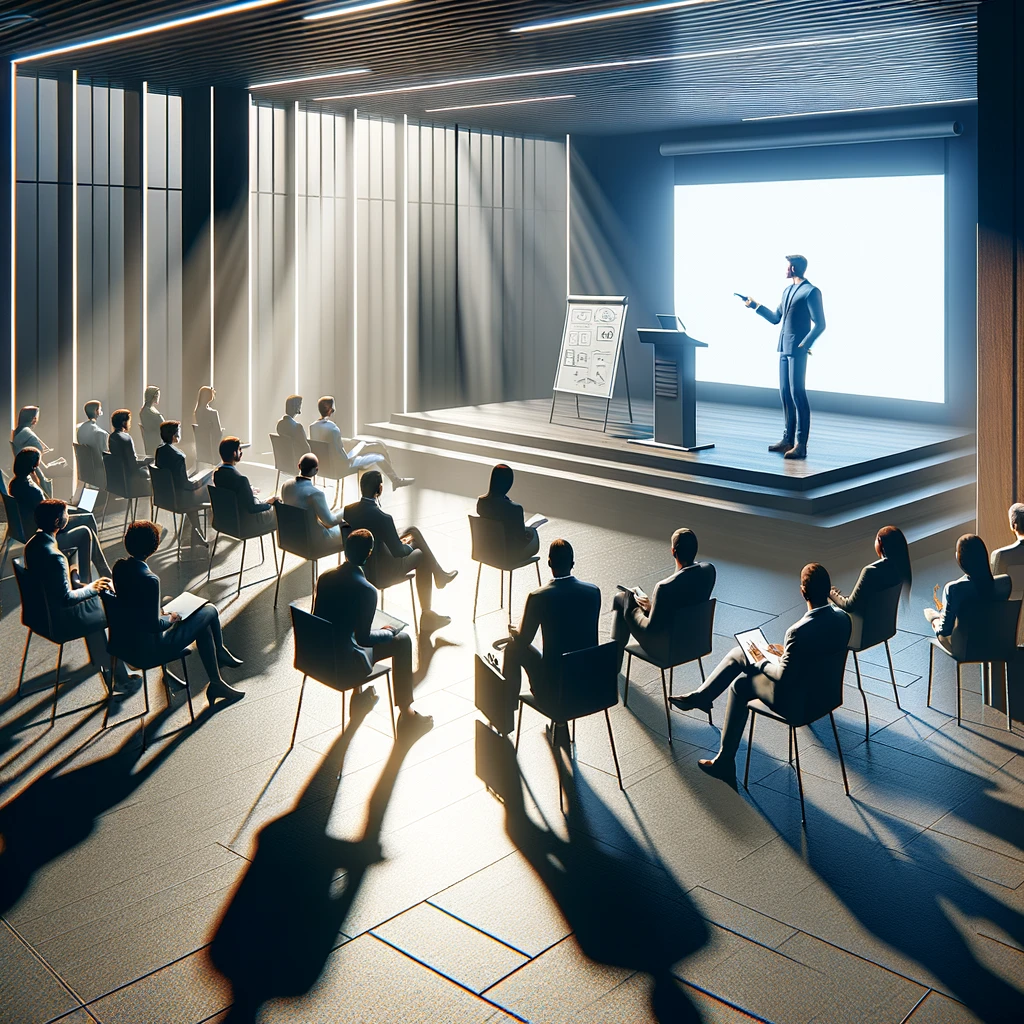
Voice Modulation
Purpose: Keep your audience engaged by varying your pitch, tone, and volume.
Techniques: Emphasize key words, pause for effect, and adjust your speed to maintain interest.
Example: Slow down when making an important point, and use a higher pitch to express excitement.
Body Language
Purpose: Convey confidence and connect with your audience through your posture, gestures, and eye contact.
Techniques: Stand tall, use open gestures, and make eye contact with different parts of the audience.
Example: Use hand gestures to emphasize a point, and avoid crossing your arms or turning away from the audience.
Audience Engagement:
Purpose: Make your presentation interactive to hold the audience’s attention.
Techniques: Ask questions, invite participation, and respond to feedback.
Example: “How many of you have experienced…?” or “What do you think about…?”
Use of Visual Aids
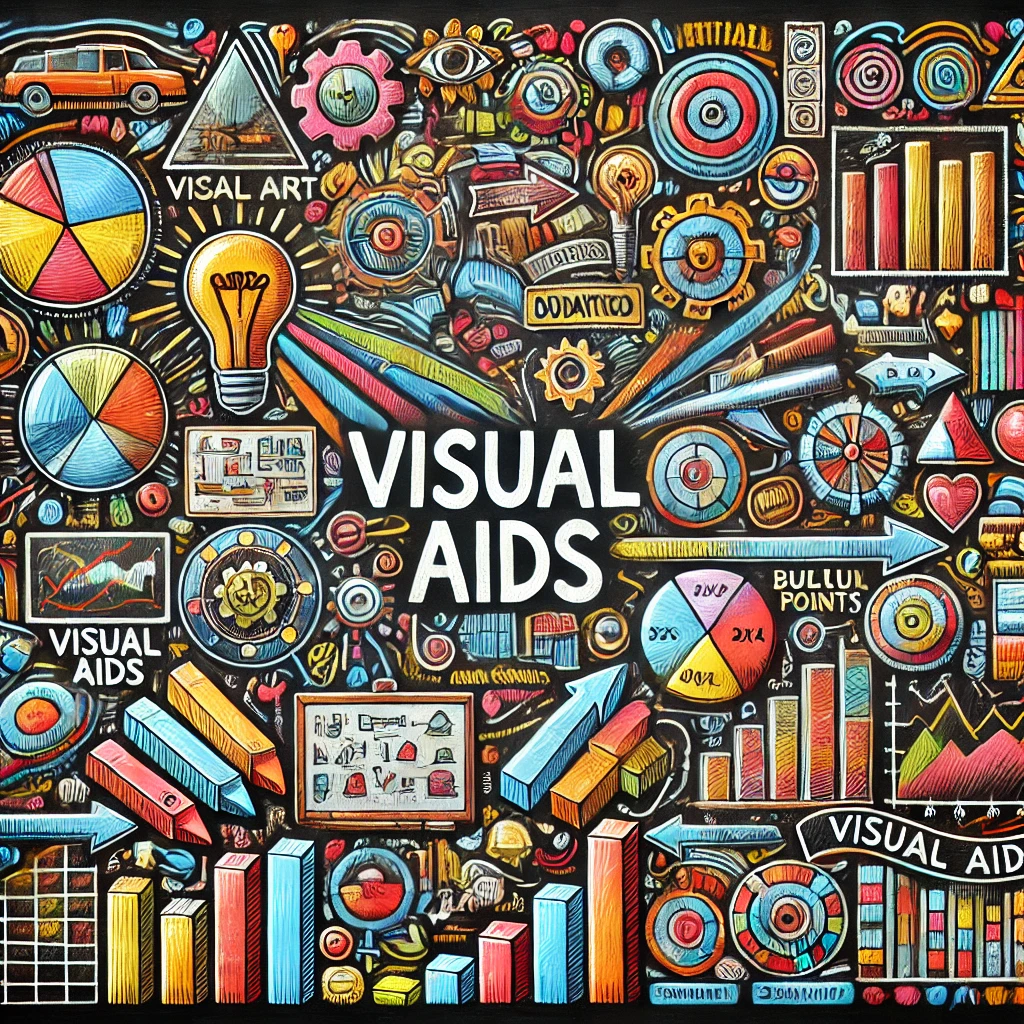
Types of Visual Aids
Slides: Present key points, images, and graphs to support your message.
Props: Physical objects that illustrate your points or add interest.
Videos/Audio Clips: Short clips that reinforce your content and keep the audience engaged.
Best Practices
Clarity: Ensure your visual aids are clear, easy to read, and not overcrowded with information.
Relevance: Only use visual aids that directly support your message.
Integration: Refer to your visual aids during your presentation to emphasize and explain key points.
Examples of visual aids:
- Slides: Use bullet points, images, and minimal text. Example: A slide with “The Three Pillars of Sustainability” and a corresponding image.
- Props: For a presentation on renewable energy, show a small solar panel or wind turbine model.
- Videos: Include a short clip demonstrating the effects of pollution during a presentation on environmental issues.
Additional Resources
In this insightful TEDx talk, Phil Waknell reveals the three key elements that transform an ordinary presentation into an extraordinary one. Watch as he uncovers the secrets to captivating your audience and delivering unforgettable messages.
CLIK HERE FOR: The secret structure of great talks- TED talk
Learning Activities
EGB
Presentation Puzzle
Objective: Practice organizing a presentation by arranging key points in the correct order.
Instructions:
- You will be given a set of cards with different parts of a presentation (e.g., introduction, main points, conclusion).
- Work in pairs to arrange the cards in the correct order to create a cohesive presentation.
- Discuss why each part belongs where it does.
Gamification Element: Earn Krugs for completing the puzzle correctly and explaining your choices. The pair with the most Krugs wins a small prize.
Example: Arrange cards like “Introduce topic,” “Provide background,” “Conclude with a call to action” in the right order.
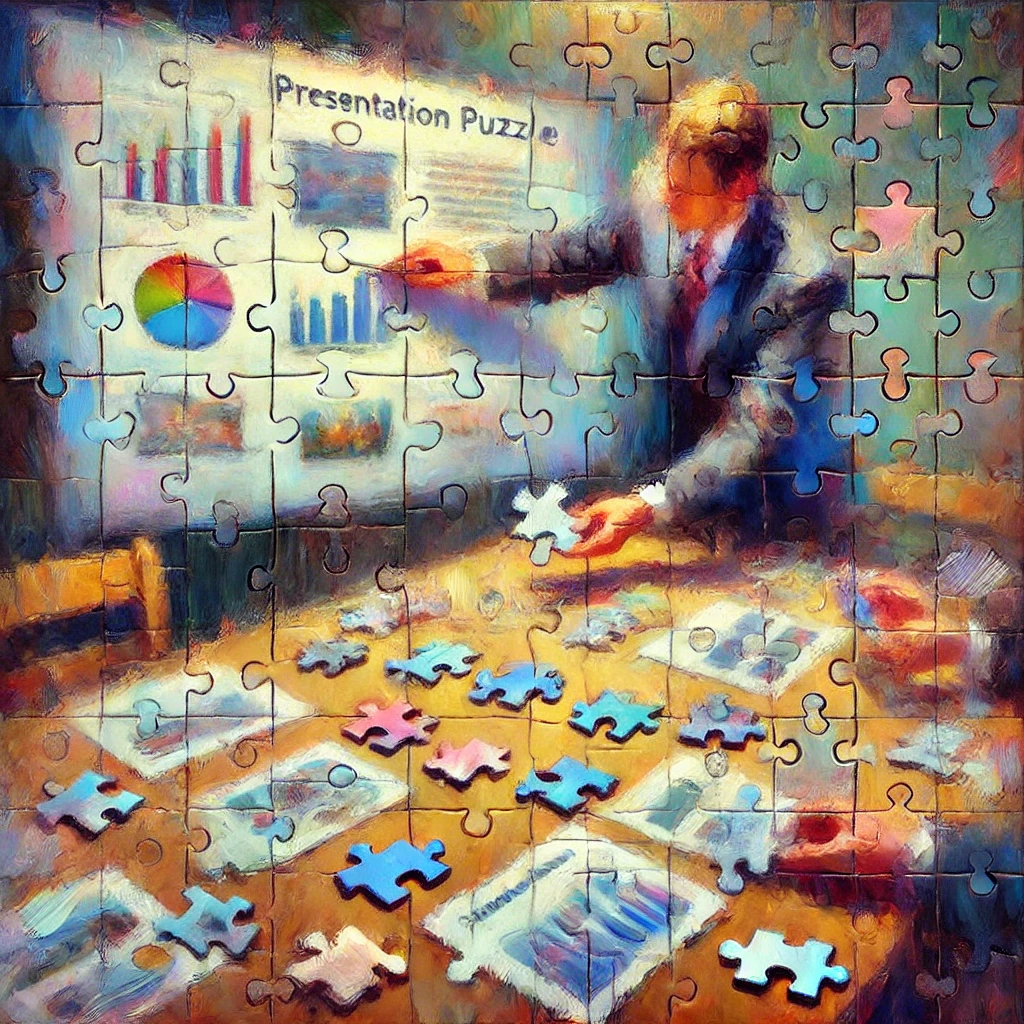
Visual Aid Creation Challenge
Objective: Learn to create effective visual aids that enhance a presentation.
Instructions:
- Choose a simple topic (e.g., “My Favorite Hobby”).
- Design a slide or a prop that supports your presentation on this topic.
- Present your visual aid to the class and explain why you chose it.
Gamification Element: Bonus Krugs for the most effective integration of the visual aid into the presentation.
Example: Create a slide with key points and an image of your hobby, or bring a related prop to show during your talk.

Interactive Mini-Presentation
Objective: Practice delivering a short, interactive presentation using proper posture, modulation, and visual aids.
Instructions:
- Prepare a 2-minute presentation on a topic of your choice.
- Use at least one visual aid and incorporate a question or activity to engage the audience.
- Deliver your presentation, focusing on posture, modulation, and interaction.
Gamification Element: Earn Krugs for each aspect of the presentation (content, visual aid, audience engagement). The student with the most Krugs at the end of the activity wins a special reward.
Example: Present on “Why Reading is Important,” using a slide with statistics and asking the class for their favorite books.
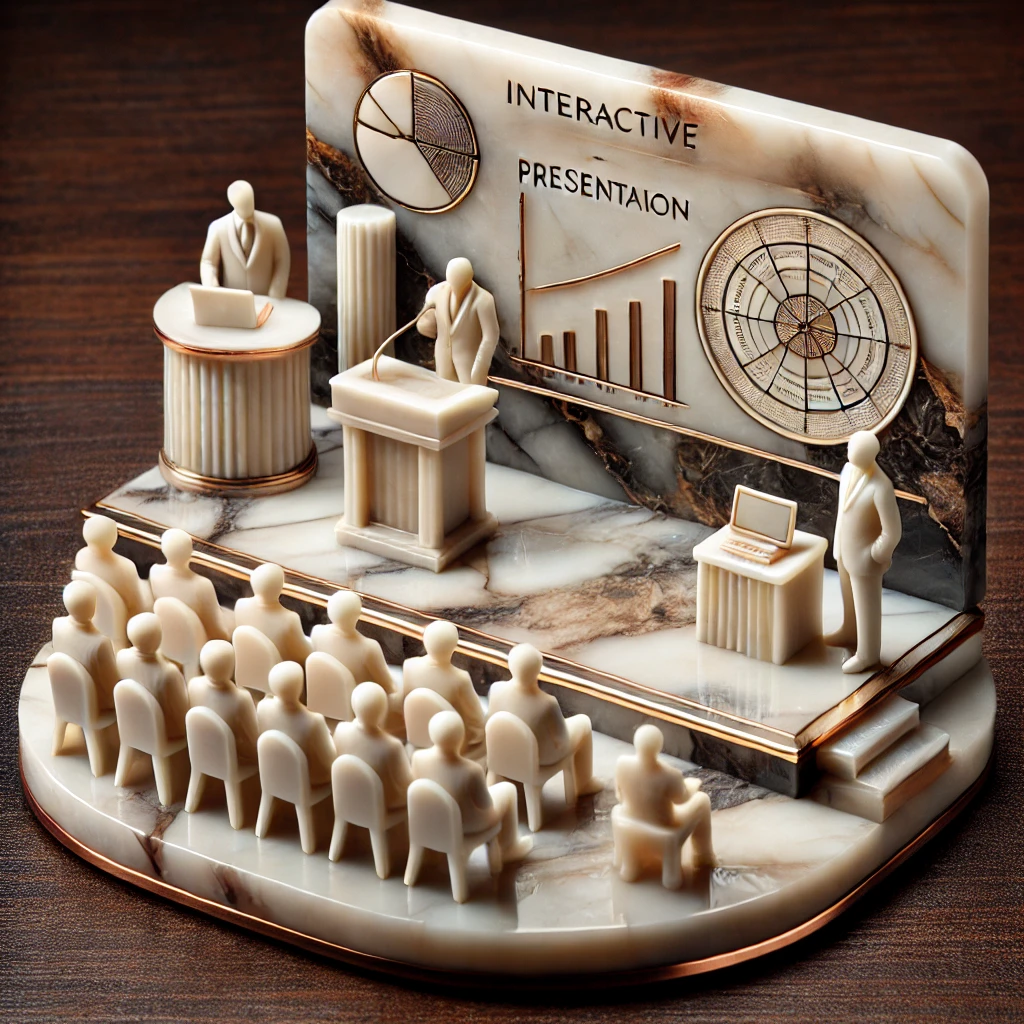
BGU
Presentation Outline Race
Objective: Quickly organize a well-structured presentation outline.
Instructions:
- You will be given a topic (e.g., “The Impact of Social Media”) and must create a presentation outline including an introduction, three main points, and a conclusion.
- Work in groups to organize your outline as quickly as possible.
- Present your outline to the class and explain your choices.
Gamification Element: Earn Krugs based on speed and the quality of your outline. The group with the most well-organized outline wins extra Krugs.
Example: Outline for “The Impact of Social Media”: Introduction, Positive Effects, Negative Effects, Conclusion.
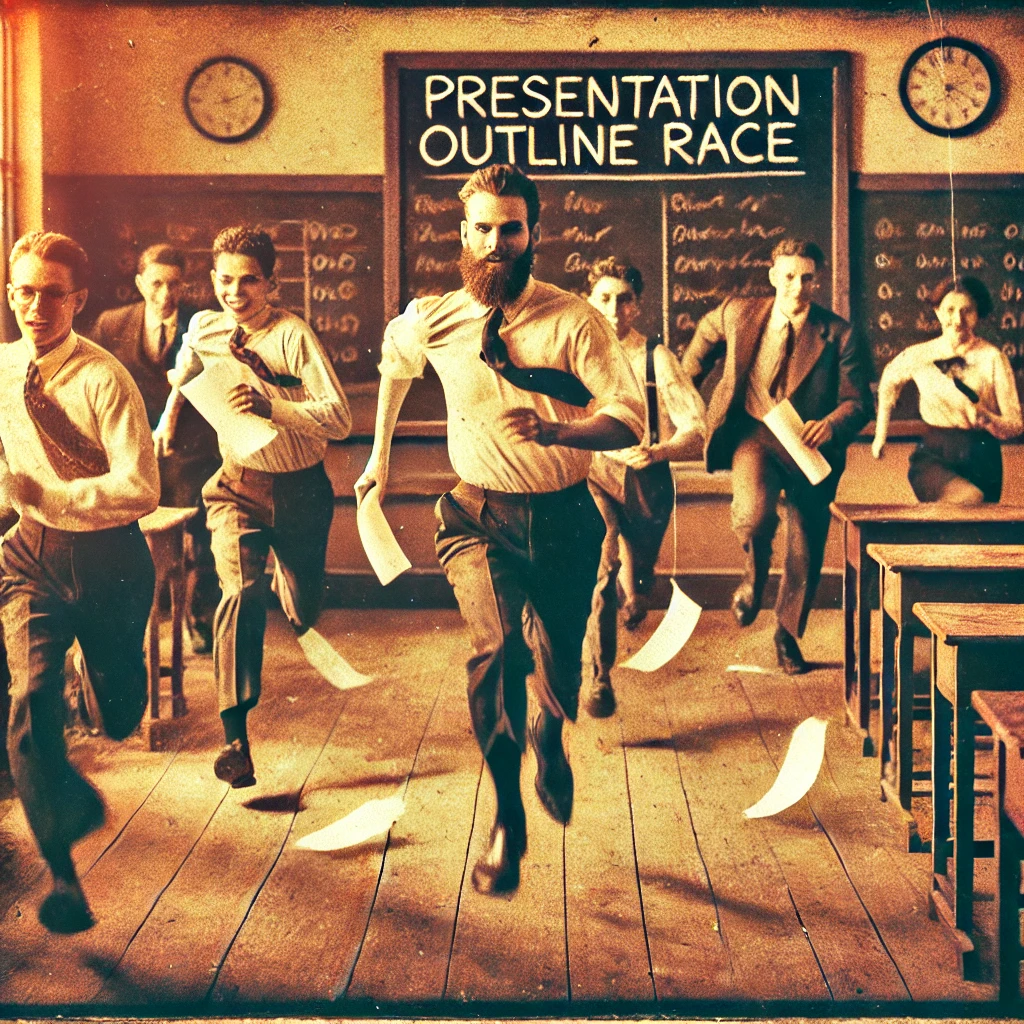
Visual Aid Workshop
Objective: Create and critique visual aids to improve your presentation skills.Instructions:
- Work in pairs to design visual aids for a presentation on a complex topic (e.g., “Climate Change Solutions”).
- Present your visual aids to another pair and give constructive feedback.
- Revise your visual aids based on the feedback and share the final version with the class.
Gamification Element: Earn Krugs for creativity, clarity, and improvement based on feedback. The pair with the most effective visual aids earns a bonus reward.
Example: Create a slide with a graph showing carbon emissions and a diagram of renewable energy sources.
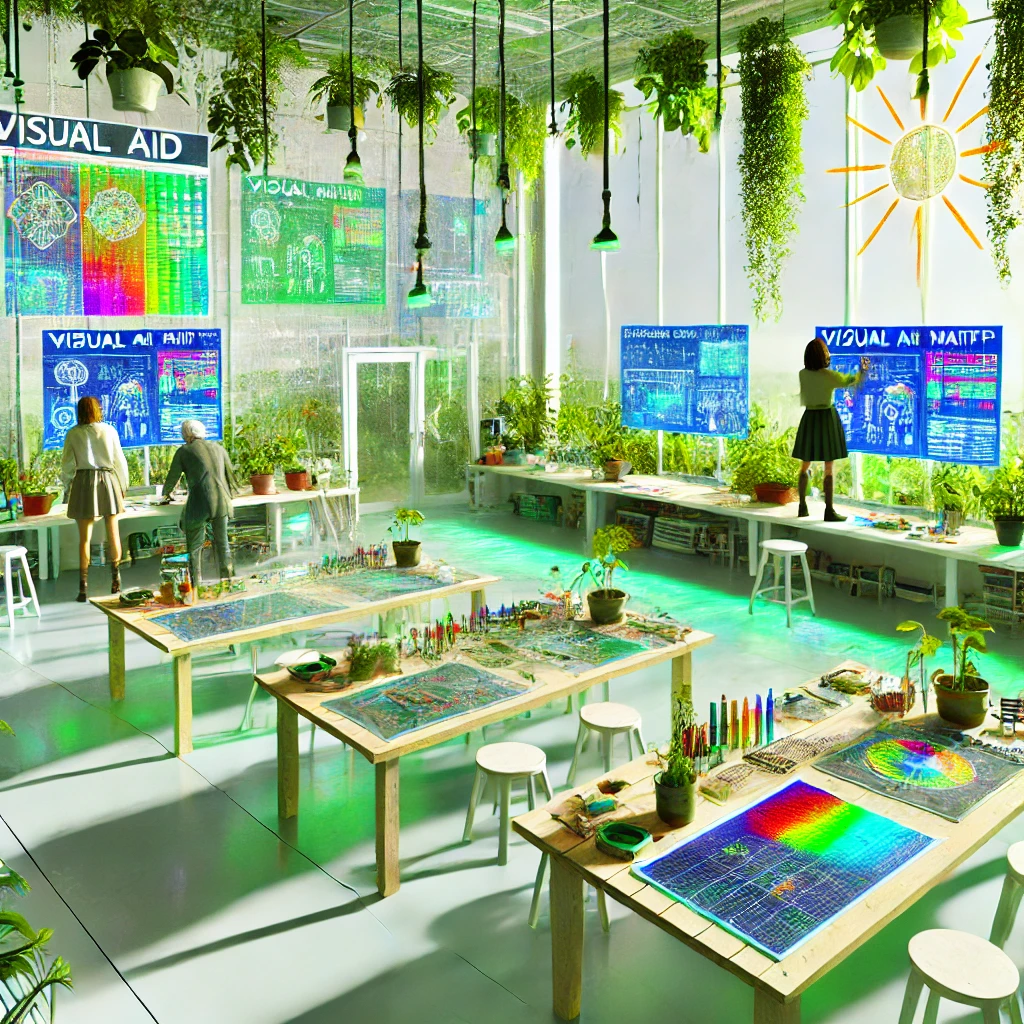
Peer-Reviewed Presentations
Objective: Deliver a full presentation and receive peer feedback on posture, modulation, and visual aids.
Instructions:
- Prepare a 3-5 minute presentation on a research topic of your choice.
- Focus on using visual aids effectively and maintaining good posture and voice modulation.
- Deliver your presentation to the class, who will use a rubric to provide feedback on your performance.
Gamification Element: Earn Krugs based on peer feedback and self-assessment. The highest-scoring presentation receives a class-wide recognition and bonus Krugs.
Example: Present on “The Benefits of Bilingualism,” using slides with statistics, images, and clear, modulated speech.
